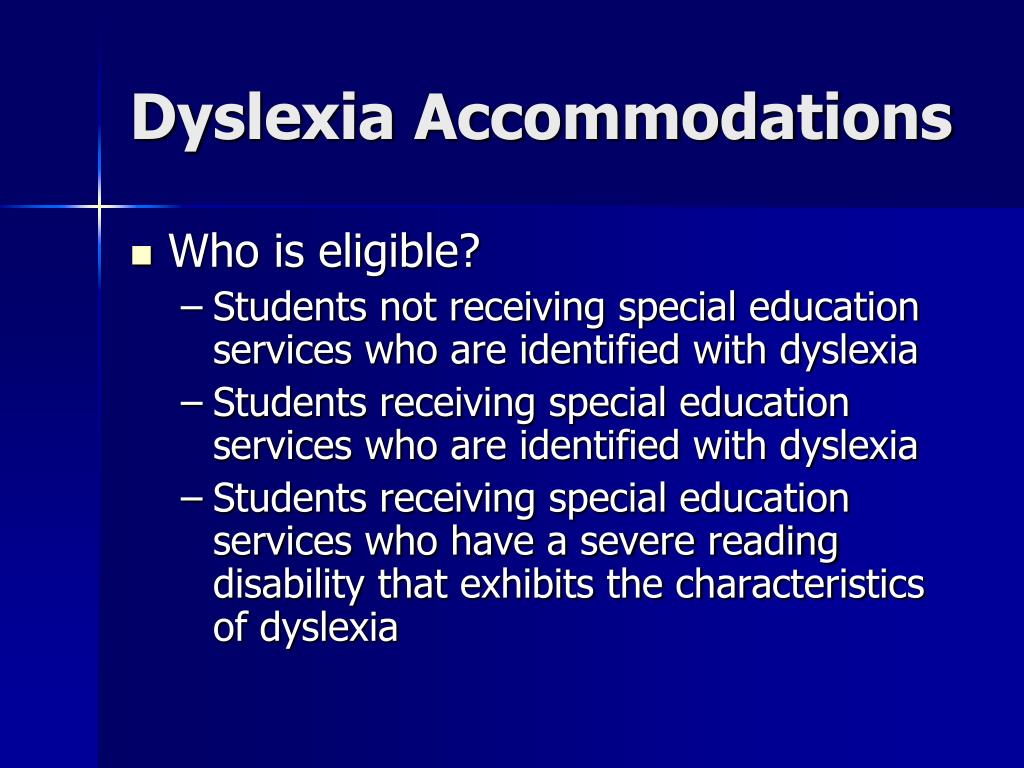
Students with dyslexia generally take much longer to prepare for tests and produce written work.


In the case of the dyslexic student in the classroom, accommodations are required in order for her to succeed. Fairness means that everyone gets what he or she needs to be successful. To paraphrase him, f airness does not mean that everyone gets the same thing. We like what Rick Lavoie, special education administrator of 30 years and inspirational speaker, has to say on this topic. We often hear that giving accommodations for a student with a learning disability is not fair to the other students. It is important for teachers, families, and dyslexics to have open communication about what specific accommodations students will need to ensure learning success. However, they are frequently misunderstood as “crutches.” As Johnson and Myklebust pointed out in their seminal text on learning disabilities in 1967, we find it acceptable in our society to allow golfers to have handicaps to level the playing field, but somehow we find it unacceptable to give accommodations to students with learning disabilities.Ī dyslexic student in the general classroom may encounter various obstacles that hinder his/her academic potential. Have some general recommendations for classroom accommodations that can help your students with learning disabilitiesĪccommodations are key to the success of dyslexics in school.Know that accommodations are critical to “even the playing field” for dyslexic and learning disabled students.Avoid penalizing for spelling errors, reversals, etc.Upon completion of this section, you will:.Evaluate oral performances more than written.

Take time to reteach if student is struggling to understand.Present information in small increments and at a slower pace.Use grid paper to help correctly line up math problems.Allow student to use a calculator without penalty.Allow student to dictate answer to essay questions.Have student focus on a single aspect of a writing assignment (elaboration, voice, etc.).Grade only for content not spelling or handwriting.Allow student to use a keyboard when appropriate.Provide a print outline with videotapes and filmstrips.Provide a “designated note taker ” photocopy another student’s or teacher’s notes.Use worksheets that require minimal writing.Ask student to repeat check for understanding.Accompany oral directions with visual clues.Read written directions to student, then model/demonstrate.Break complex direction into small steps-arrange in a vertical list format.Give directions in small steps and with as few words as possible.Provide quiet during intense learning times.Seat student close to teacher in order to monitor understanding.Substitute alternatives for written assignments (posters, oral/taped or video presentations, projects, collages, etc.).Shorten spelling tests to focus on mastering the most functional words.Shorten assignments to focus on mastery of key concepts.Talk through the material one-to-one after reading assignments.Provide a one-page summary and/or a review of important facts.Use videos/filmstrips related to the readings.Use marker or highlighting tape to highlight important textbook sections.

Provide audiotapes/CDs of textbooks and have student follow the text while listening.Listed below are possible accommodations for the §504, or Admission, Review, Dismissal (ARD) Committee of Knowledgeable Persons to consider for a student with dyslexia.


 0 kommentar(er)
0 kommentar(er)
